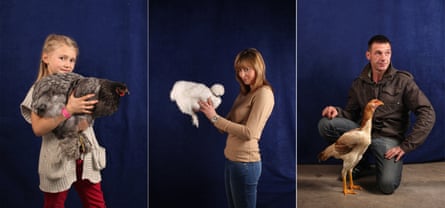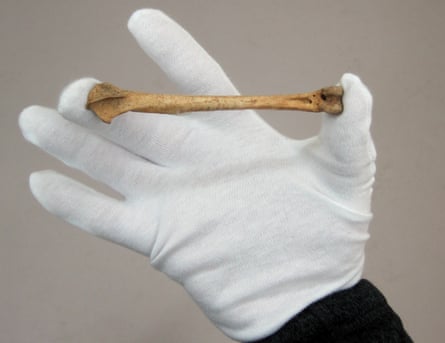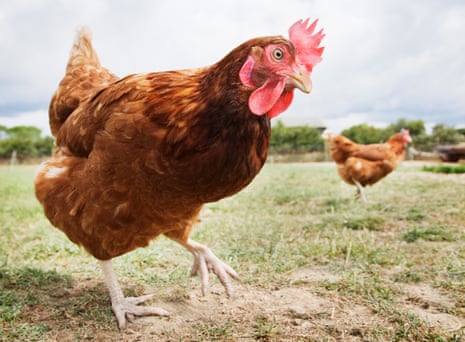Chickens are native to the tropical jungles of Southeast Asia, but over the last approximately 8,000 years, chickens have been domesticated and spread around the globe to become one of the most valued domesticated animals. These fairly shy forest birds lack the ability for long-distance flying and are not migratory. As such, their spread around the world is not just a tale of domestication, but one that is intimately linked to the movements of people around the world.
Darwin was the first to suggest that all domestic chickens descended from the red junglefowl Gallus gallus. The earliest archaeological evidence for domesticated chickens has been reported from sites in China, where chicken bones had been found dating back to 10,000-8000 years ago (West and Zhou, 1988; Xiang et al., 2014). However, close examination of the reported chicken remains found that most, if not all, bones identified as chicken are ring-necked pheasants, a species common in China, instead (Peters et al., 2016; Eda et al., 2015). Evidence from China regarding the early domestication of chickens remains controversial, but chicken remains from the Indus Valley in northern India suggests that domesticated chickens were present in southern Asia 4,000 years ago.
The rise of new molecular techniques, such as DNA analysis, allowed scientists to look at the domestication of chickens at a whole new level. An early study of mitochondrial DNA (mtDNA) showed that domestic chickens indeed descended from the red junglefowl, and indicated that a single domestication event had taken place in Thailand (Fumihito et al., 1996). More recent studies showed that the domestication of chickens occurred in at least three separate regions in Asia (Liu et al., 2006). Moreover, domesticated chickens interbred with local populations of different wild jungle fowl species; the gene for yellow legs, an ubiquitous characteristic of domesticated chickens, can be traced back to the closely related grey junglefowl (Gallus sonneratii) (Eriksson et al., 2008) rather than the red junglefowl.
From southern Asia, the chicken left its natural range behind and embarked on its Grand Tour. Domestic chickens reached West Asia and the Near East during the third and second millennium BC, and were introduced to Europe by the Phoenicians during the 8th century BC (Perry-Gal et al., 2015). Up till then, chickens had had a mostly ceremonial or symbolic role, as evidenced by the inclusion of chickens in burials, clay figurines in early Chinese cultures and mentions of chickens in early texts. As chickens spread through Europe, chicken remains in archaeological assemblages became more abundant. This indicates that chickens had started to form an established part of European livestock, and the sagas have it that when the Vikings colonised Iceland in the 10th century, they took along their chickens.

Today’s chickens represent a range of different sizes, body proportions, plumage colours, behaviour, and physiological traits related to meat and egg production. Although it is thought that many modern breeds originated relatively recently (in the 18th-19th century), evidence from historical sources suggests that selective breeding was already practiced during Roman times and that several regions had their own domestic chickens with particular characteristics (de Cupere et al., 2005).
The spread of chickens from Asia south- and eastwards is thought to have been initiated by the first farmers, or Austronesians, who spread from mainland China into Island South East Asia around 5000 years ago. With them, they took pottery and agriculture including domestic animals such as pigs and dogs (Bellwood and Dizon, 2006). Although archaeological chicken remains from this region are very scarce, it is assumed that chickens formed part of this agricultural package as well. When the Polynesians subsequently colonized the Pacific island archipelagos, chickens were taken with them. Remains of chickens have been found in archaeological assemblages all over the Pacific region, and on the Hawaiian island Kauai, chickens introduced by the Polynesians some 800 years ago now run wild. Controversial evidence even suggests that the Polynesians brought chickens to South America (Storey et al., 2007) long before Columbus set foot on the continent.
Given the widespread introductions of chickens (and other commensals such as the Pacific rat Rattus exulans) by the Polynesians, it was generally assumed that the same had happened when the Polynesians colonized New Zealand in the thirteenth century. But chickens were conspicuously absent from the earliest Polynesian archaeological assemblages. Had they been overlooked? Lost to disease or predation after their arrival? Was the abundance of large flightless birds that required little effort to capture reason to abandon the keeping of chickens? Or, were they never there in the first place? To settle the question of when chickens arrived in New Zealand, researchers used radiocarbon dating to assess the age of three archaeological chicken bones that could potentially date to the period of Polynesian colonisation.

Surprisingly, the bones turned out to be quite young, with median ages of 1756, 1757 and 1840 - although note that the radiocarbon method yields age probability distributions rather than a single age, (Wood et al., 2016). These ages postdate the arrival of Polynesians by far, and pre-date permanent European settlement, but their age distributions overlap with the arrival of Captain James Cook’s second voyage in 1773. Moreover, Cook recorded gifting several chickens, both hens and cocks, to local Māori on several occasions. Little is known regarding the fate of these chickens, and it is unclear if the bones sampled in this study represent the chickens that were gifted by Captain Cook, or their descendants. The trading by Māori of other European items between settlements along the coast suggests that Māori were quick to incorporate chickens into their diet.
This may not just have been a matter of taste. Before the arrival of humans, New Zealand was home to a unique terrestrial fauna that included large flightless birds such as the moa, and large numbers of sea birds that bred in colonies on land. Much of the native fauna had gone extinct in less than two centuries after the Polynesians arrived. Moreover, evidence from East Polynesia suggests that long-distance trading had almost ceased around that time, and that the ability to make long voyages may have been lost among Māori. With protein sources dwindling rapidly, and without the possibility to resupply by long-distance trading, Māori were facing limited food resources. The arrival of chickens may have been met with relief.

Despite their title of the oldest chicken bones from New Zealand, the bones do not answer the question of whether or not chickens were introduced to New Zealand by the first Polynesians. However, the authors argue, had chickens been on board of the first Polynesian canoes and formed an established part of the settlers’ diet, their bones would have been more abundant in the earliest Polynesian assemblages, as is the case on other Polynesian islands. The fact that New Zealand was teeming with a diverse terrestrial fauna that was easy prey may have been enough incentive to leave the chicken be.
References
Bellwood and Dizon, 2005. The Batanes Archaeological Project and the “Out of Taiwan” Hypothesis for Austronesian Dispersal. Journal of Austronesian Studies 1:1-32.
de Cupere et al, 2005. Ancient breeds of domestic fowl (Gallus gallus f. domestica) distinguished on the basis of traditional observations combined with mixture analysis. Journal of Archaeological Science 32:1587-1597.
Eda et al., 2016. Reevaluation of early Holocene chicken domestication in northern China. Journal of Archaeological Science 67:25-31.
Eriksson et al., 2008. Identification of the yellow skin gene reveals a hybrid origin of the domestic chicken. PLoS Genetics 4(2) e1000010.
Fumihito et al 1996. Monophyletic origin and unique dispersal patterns of domestic fowls. PNAS 93:6792-6795.
Liu et al 2006. Multiple maternal origins of chickens: out of the Asian jungles. Molecular Phylogenetics and Evolution 38:12-19.
Perry-Gal et al., 2015. Earliest economic exploitation of chicken outside East Asia: Evidence from the Hellenistic Southern Levant. PNAS 112: 9849–9854.
Peters et al., 2016. Holocene cultural history of Red jungle fowl (Gallus gallus) and its domestic descendant in East Asia. Quaternary Science Reviews 142:102-119.
Storey et al., 2007. Radiocarbon and DNA evidence for a pre-Columbian introduction of Polynesian chickens to Chile. PNAS 104: 10335–10339.
West and Zhou 1988. Did chickens go north? New evidence for domestication. Journal of Archaeological Science 15:515-533.
Wood et al., 2016. Origin and timing of New Zealand’s earliest domestic chickens: Polynesian commensals or European introductions? Royal Society Open Science 3:160258.
Xiang et al., 2014. Early Holocene chicken domestication in northern China. PNAS 111:17564–17569.

Comments (…)
Sign in or create your Guardian account to join the discussion